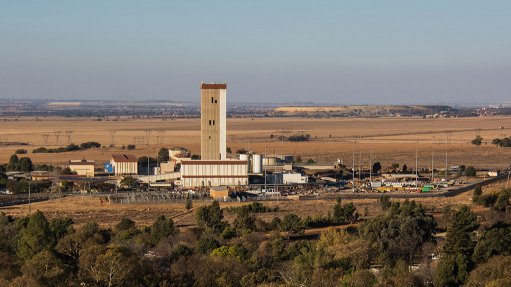
Name: Driefontein Operations.
Location: The Driefontein operations are situated between 70 km and 80 km west of Johannesburg, near Carletonville, in South Africa’s Gauteng province.
Controlling Company: Sibanye Gold.
Brief History: West Driefontein started production in 1952 and East Driefontein in 1972. In 1999, East and West Driefontein merged to form Driefontein. Shortly thereafter, Gold Fields acquired the remaining 20% stake from Anglo American to obtain full ownership of the mine. In 2004, Driefontein became the only mine to date with a cumulative yield of 100-million ounces of gold. Since 2012, following the unbundling of Gold Fields, Sibanye Gold has been the owner of the operations.
Driefontein successfully converted its old-order mining right to a new-order mining right in 2006. The new-order mining right is valid from January 30, 2007, to January 29, 2037, and covers 8 561 ha.
Brief Description: Driefontein is a large group of well-established shallow to ultradeep-level gold mines. It comprises six operating shaft complexes that mine gold ore at depths of between 600 m and 3 300 m below surface.
Geology/Mineralisation: The mineralisation style at Driefontein is a paleo-placer. Gold mineralisation is hosted by auriferous and uraniferous, predominantly quartz pebble conglomerates, hosted by the Ventersdorp Contact reef (VCR) and the Main Conglomerate Formation – Carbon Leader reef (CLR) and Middelvlei reef (MVR) – of the Central Rand Group reefs.
These reefs are laterally continuous with relatively long-range predictability; and have clear patterns of mineralisation governed by sedimentary characteristics.
Principal mining takes place on the CLR, which constitutes almost 65% of the mineral reserves. It is a generally high-grade reef comprising different facies and it dips to the south at an estimated 25 °. The MVR is a minor contributor to current production, comprising 2% of the mineral reserve. The reef is situated about 50 m above the CLR.
The CLR subcrops against the VCR in the eastern part of the mine. The VCR is most extensively developed in the east and comprises 31% of the mineral reserves. Driefontein is also processing lower- grade surface material, comprising 2% of the mineral reserves.
Reserves: Total mineral reserves as at December 31, 2014, were estimated at 38.9-million tons grading 5.9 g/t.
Resources: Total mineral resources as at December 31, 2014, were estimated at 70-million tons grading 10.2 g/t.
Products: Gold.
Mining Method: Driefontein employs scattered stoping and mini longwall stoping with closely spaced dip pillars. Surface rock dump mining is a load-haul-dump operation.
Major Infrastructure and Equipment: Driefontein comprises six shaft systems – five subvertical shafts and one tertiary shaft. Underground ore and low-grade surface rock dumps are processed using three metallurgical plants, with a combined mill throughput capacity of about six-million tonnes a year.
Prospects: A prefeasibility study (PFS) on the viability of developing the Driefontein 5 Shaft below-infrastructure project resources below the current infrastructure was completed in 2014. The PFS suggests robust economic returns that exceed the company’s in-house investment hurdle rates. The project has consequently been included in the mineral reserves in 2015. The below-infrastructure project will add an estimated one-million ounces of gold to the Driefontein mineral reserves. Additional detailed feasibility studies are scheduled for completion in the second quarter of 2015.
Contact Person: Sibanye Gold head of corporate affairs James Wellstead.
Contact Details:
Sibanye Gold,
tel +27 11 278 9600,
fax +27 11 278 9863,
email james.wellsted@sibanyegold.co.za, and
website http://www.sibanyegold.co.za.